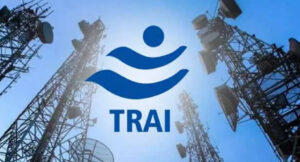The Telecom Regulatory Authority of India has received applications from five entities expressing interest in being empanelled as digital connectivity rating agencies (DCRAs) who will evaluate properties according to the regulator’s prescribed rules and norms, according to Chairman Anil Kumar Lahoti.
TRAI is hoping for an early launch of the entire system, with Lahoti noting that the first round of empanelment could take place as soon as this month.
Some projects and properties have already started making enquiries about the rating system, he told PTI.
The proposed ‘star rating’ system will evaluate properties on digital connectivity, similar to green building or energy efficiency rating systems.
New as well as existing buildings can be rated under the proposed system, and TRAI hopes that framework may even nudge builders to “retrofit” existing buildings with good digital connectivity infrastructure to get a favourable rating.
To support this, TRAI is developing a digital platform and final property assessments will also be published on the regulator’s website.
Over time, TRAI expects the digital connectivity rating system to become a standard and key selling point for developers, builders on the one hand, and buyers or tenants on the other, given connectivity demands at workplace and homes.
At present, dense construction in urban areas also makes connectivity a challenge in many locations.
“We have already issued the regulation for the rating framework. We have also initiated the process of empanelling agencies who can do the rating and the call for application is on. We have received applications from five agencies who have shown interest in getting empanelled as DCRAs.
“We have also issued a draft manual on the rating system so that there is a uniform, standard, transparent process for the rating, which is known across all the rating agencies and property managers who are seeking the rating. After that, it is for any property manager to approach a rating agencies and get the rating,” Lahoti said.
Last month, TRAI released the draft manual for assessment of rating of properties for digital connectivity under the Rating of Properties for Digital Connectivity Regulations, 2024.
According to TRAI, the rating manual will enable adoption of uniform assessment methodology by the Digital Connectivity Rating Agencies for rating of properties.
It will also provide a standard reference for the property managers for creation of digital connectivity infrastructure (DCI) in their properties.
Buildings shall be evaluated based on defined parameters in the regulation — fiber readiness, mobile network availability, in-building solutions, and wi-fi infrastructure, service performance among others.
The regulator had also submitted its recommendations to the government on ‘Rating of Buildings or Areas for Digital Connectivity’ in February 2023, with an aim to create an ecosystem for building of DCI as a part of any development activity.
TRAI has also released the regulation Rating of Properties for Digital Connectivity Regulations, 2024 in October last year to bring a framework for rating of properties for digital connectivity. The idea is to promote creation of good digital connectivity through a collaborative and self-sustainable approach.
“The two things — regulations and policy framework are not contingent upon each other, they are complementary. The regulation is already in force, and the rating of properties can start. The policy framework enabling provisions in the national building code and in the model building bylaws, can process concurrently,” he said.
Industry estimates show that more than 80 per cent of the data consumption takes place inside building premises, Lahoti said, emphasising that robust and reliable digital connectivity inside buildings is essential to meet connectivity requirement and consumer expectations.
“This is very important as far as the telecom quality is concerned. The provision of in-building solution inside the building premises will complement the network being provided outside by the telecom service providers,” Lahoti said.
Digital connectivity has also become crucial, especially for 5G and, in future, the 6G networks, which use high frequency bands for delivering ultra hi-speed data, but get attenuated due to walls and building materials.
“Today, when anybody buys or rents a flat, or maybe rents office premises, and the moment they occupy it, the first problem that they may encounter is connectivity. Imagine buying or renting an expensive flat, and when you move in, you find that your mobile (connectivity) is not working, or you don’t have internet connectivity in the rooms…
“In today’s world, when your entire social, professional, economic life needs digital connectivity, this becomes a serious constraint, and the person starts looking for solution… But the good thing is that all this is solvable by providing engineered solutions inside the buildings,” he told PTI.
Emphasising that it is important that property developers now start working on these lines, Lahoti said, “In order to nudge the property developers or the project proponents to provide good digital connectivity inside built premises, and to keep a prospective buyer or tenant informed about the quality that he or she is going to get, we have come out with regulation.” There is no limit on the number of DCRAs who can be empanelled so long as agencies qualify the stipulated norms, Lahoti said.
“The rating itself will be in form of star rating. So a property meeting all the norms and in the highest range will get a five-star rating… the property with poor digital connectivity may get one star. This is very similar to our green building rating system as well as the energy efficiency rating of appliances where star ratings are available, and you can make out by way of rating how where the appliance or the property stand,” he said.
TRAI is keen to roll out the entire system “fast”.
“If we get the right initiatives from various project proponents, in this regard, in a matter of few years, people will become aware about this, and more and more properties will look to get this rating,” the TRAI chief added. PTI









